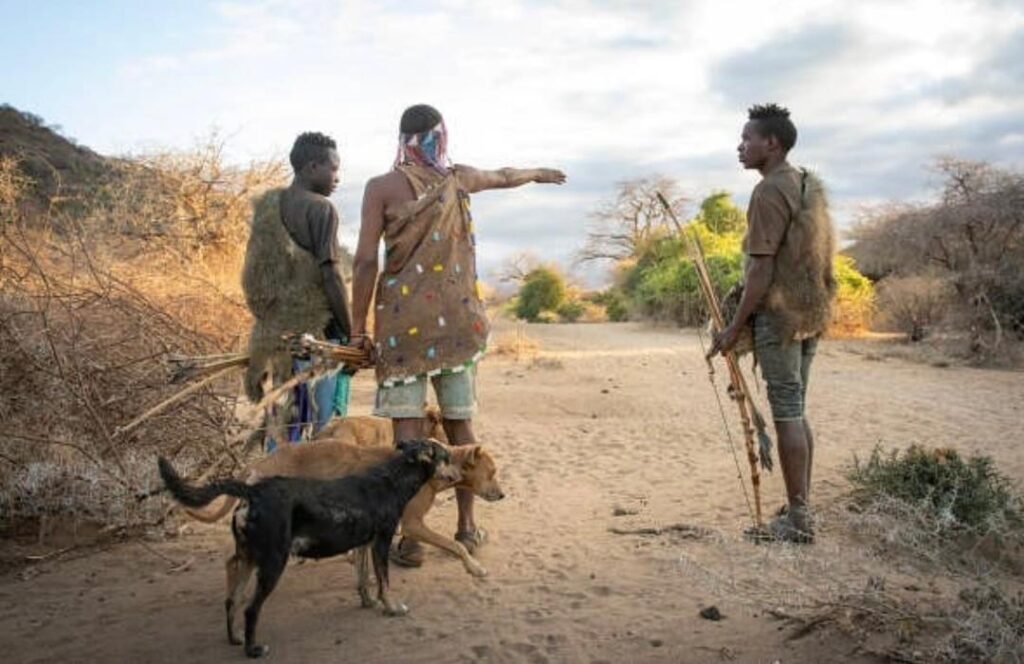Meeting indigenous people and experiencing their rewarding culture, norms, and traditions, while exploring their amazing natural environments, will make your journey unforgettable.
In northern Tanzania, you’ll find the Maasai, Meru, Datoga, Hadzabe, and Chagga Tribes, just a few among 120 tribes. Our founder, Demi Kessy, is actually from the Chagga Tribe.
The people from each tribe will welcome you to their local homes, and you’ll learn their way of life, whether it’s cash crop farming, raising animals, or making crafts.
We offer an authentic cultural tour to the nearby Chagga and Meru Tribes. If you want to visit one of the Maasai, Datoga, or Hadzabe Tribes, please book a safari with us and we can add on this cultural tour.
Our cultural tourism program offers:
- Eating traditional food based on the particular tribe you are visiting.
- Taking a shamba tour (farm tour) where you can observe local farmers working in their fields, hoeing the land, and keeping their domestic animals.
- Observing craftspeople make their art.
- Observing traditional dance where you have the opportunity to participate.
- Hear about Swahili survival skills, including learning about local medicine.
- Taking a study tour, where you learn about the lives of the indigenous tribes, what has changed over the years, and how the tribes are handling these many changes.
Rate: $300 per person per tour. This includes transport to the village, food, guide, driver, and the village fee. You can stay the night for $50 per person. Tips are appreciated.
A little over a half of your money goes to the community to support them in terms of health and education. 100% of the proceeds from anything you buy from a tribe goes to that tribe.

The Chagga Cultural Tour
The Chagga are Bantu speaking people living on the fertile land near Mt. Kilimanjaro. They are the third largest tribe in Tanzania. They’re the migrants of various groups who’ve relocated into the forest-covered foothills.
The life of the Chagga has changed. With agriculture and tourism income from Mt. Kilimanjaro, they have built modern houses here.
As we noted above, DGA’s founder, Demi Kessy, belongs to this group. As your guide, he’ll talk to you about his tribe while on the mountain. The last name Kessy represents a big clan from Marangu village.
The Chagga are divided into small kingdoms, or tribes. There are also Chagga from Machame, Chagga from Kibosho, Chagga from Rombo, Chagga from Old Moshi, Chagga from Uru, and more. Each tribe has an umangi, or chief. And each tribe will speak with a slightly different accent.
The main activities are:
- Visiting here you’ll get a chance to enjoy a coffee tour, as well as enjoy the fresh local coffee. The land is famous for producing the Arabica coffee, the main cash crop.
- You’ll take the shamba tour (farm tour) where you can observe local farmers working in their fields, hoeing the land, and keeping their domestic animals.
- The Chagga people also farm banana, beans, and maize as cash crops. Because of the healthy soil in this area, bananas grow well. They also make their traditional local brew, banana beer. You are welcome to test the local banana beer.
- You’ll eat machalari, which is their traditional food. It is a fresh banana cooked together with beef. By request, vegetarian food can also be accommodated.
- You’ll take an old caves tour. A long time ago when the chiefs ruled, there were local fights between tribes over territory, or grazing areas. They built caves, and families hid in them if they were attacked.
The Maasai Cultural Tour
The Maasai are a semi-nomadic Nilotic ethnic group who live in northern Tanzania and southern Kenya.
The Maasai are a very welcoming people, and the warriors and elders are happy to share their stories with visitors. The warriors protect the clan from danger and bring food while the elders take care of the family. Teenagers graze cattles at nearby compounds.
They call their territory Maasai Boma. In each and every Boma there is a head of the family. They graze cattle while living in the wilderness areas. Lots of them are living in Ngorongoro, and this area is now called Ngorongoro Conservation Area.
The Moran graze cattle from afar during the dry season. The Moran, or Nyangulo, are warriors. To become a warrior, a male has to be circumcised in the traditional Maasai way, as well as trained to protect the society.
The main activities are:
- You’ll learn about the traditional herbs the Maasai use. Many Maasai don’t believe in conventional medicine. You’ll learn what local medicine they use instead.
- You’ll enjoy a traditional dancing performance. You’re welcome to participate.
- If you participate in the local dancing and singing, you must dress the local way. They will lend you clothes to wear.
- Traditionally the Maasai eat meat, honey, and milk. By request, vegetarian food can also be accommodated.
The Meru/Arusha Cultural Tour
The Meru or wa Meru are a Bantu ethnic group of people based on the slopes of Mt. Meru in Arusha.
We’ll pick you from your hotel in Arusha and drive to the village for activities. The main activities are:
- Shamba Tour (farm tour) where you’ll observe food growing, like maize, beans, banana, and coffee, as well as livestock being tended to, such as cows, sheep, and goats.
- Visiting here you’ll get a chance to enjoy a coffee tour, as well as enjoy fresh local coffee. The land is famous for producing the Arabica coffee, the main cash crop.
- You’ll enjoy a traditional local lunch, which will be a food cooked with Meru green bananas. It’s similar to mchalari (fresh banana cooked together with beef) and ng’ande (a mixture of fresh banana and grains). By request, vegetarian food can also be accommodated.
- You’ll enjoy a traditional singing performance. You’re welcome to participate.
You’ll also take a two hour hike around Lake Duluti accompanied by a local guide. The walk offers spectacular views of both Mt. Meru and Mt. Kilimanjaro in clear weather. The lake covers an area of 63 hectares with a depth of 700 meters in the middle. The lake receives its water from underground sources and seasonal rainfall. Common birds to spot are kingfishers, gray herons, fish eagles, ospreys, and egrets.
You can also spot some monkeys, including the blue monkey, and the velvet monkey.
You’ll also have the option to go canoeing, which takes 2 to 3 hours.

The Hadzabe Cultural Tour
These bushmen of Lake Eyasi inhabit north and central Tanzania. They live a hunting and gathering lifestyle. Their population is less than 1,500. They speak a click language.
Their culture is still relatively unspoiled. Despite this, they are very welcoming and willing to share their experiences with tourists. You’ll get a feel for their charming nature and experience the best from the Hadzabe Tribe.
You’ll have a chance to chill out with a Hadzabe family to experience a bit of their way of life and hunting. You’ll also learn about their history.

The Datoga Cultural Tour
They are the pastoralist Nilotic people from north and central Tanzania. They migrated from southern Sudan or possibly the western Ethiopian highlands and settled in Kenya. There are eight Dagota Tribes, including the Kalenjin and Barbaig.
Their culture is still relatively unspoiled.Despite this, they are very welcoming and willing to share their experiences with tourists. You’ll get a feel for their charming nature and experience the best from the Datoga Tribe.
They are highly skilled in metal works. You’ll likely see their work in action, and you’ll be able to buy local beautiful jewelry.
As part of their culture, they have unique marks on their faces and around their eyes. Markings on women’s faces and shoulders are carved deeply to make them more visible.
They dress like the Maasai, wearing dresses in the colors similar to the land they live in. Women wear jewelry made from copper and beads or iron.

Karibu Kijijini kwa wenyeji, welcome to the village of locals.
